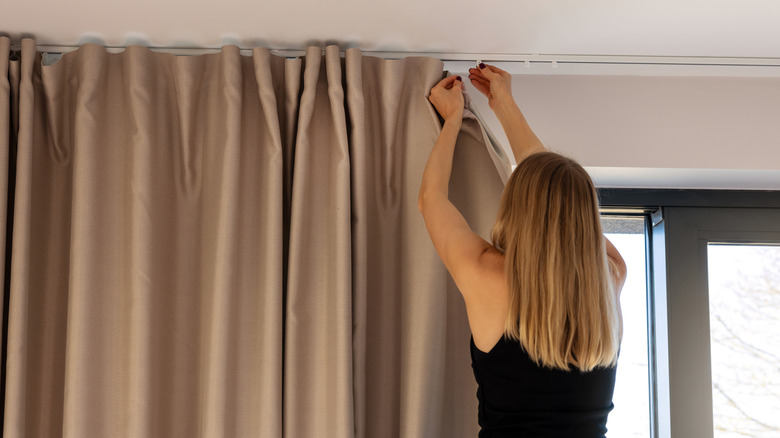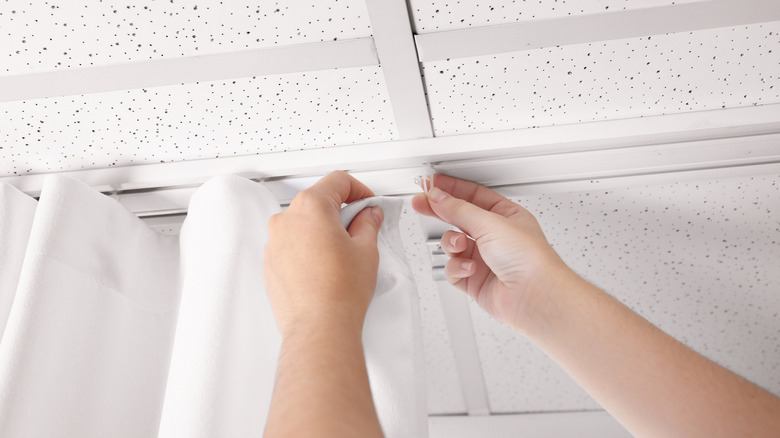Downsides To Ceiling-Mounted Curtain Tracks To Consider Before Installation
If you've ever installed a curtain, you've probably heard the phrase "hang 'em high." This simply means you should install your curtains some inches above your windows to make your space look taller. There are some general rules on how high you should hang curtains, but nothing gets higher than the ceiling itself. Ceiling-mounted curtains are all the rage because of the stylish look they give your space. But before you start installing your ceiling-mounted curtain track, there are some cons you should not overlook. From budget-busting fabric costs to durability, aesthetics, and installation issues, there are downsides to these tracks that could make you rethink your choice.
Let's start with the cost problem. Yes, this curtain-hanging option is great for the much-coveted floor-to-ceiling aesthetic. But what if the ceiling in question is 12 feet high or even more? That means you'd need curtains of a little over 12 feet to achieve the perfect kiss curtain look. Now, there are a lot of mid-range and budget-friendly curtains that cost between $20 to $250 per panel, but most come as 84-, 96-, or 108-inch drapes. So you have to get a custom curtain to fit your ceiling-mounted track. However custom drapes can go for as high as $100 to $1,500 for just one panel, making this option very expensive for homes with high ceilings. Furthermore, the weight of that length of material could be too overwhelming for a standard ceiling curtain track. You might need to spend extra bucks on special heavy-duty ceiling tracks to hold the weight of your extra-long curtains.
More downsides to ceiling-mounted curtain tracks
Yes, you can DIY install a ceiling-mounted curtain track, but the process can be quite complex. Unlike curtain rods, which can be mounted with a few screws and brackets, ceiling-mounted tracks require drilling into the ceiling and sometimes professional help. Even after installation, making adjustments to these tracks can be tricky because any mistakes could lead to potential damage to the ceiling. Over time, the tracks can start to squeak and get noisy if the glides aren't regularly lubricated. Lack of lubrication can also cause your curtain to get stuck and be difficult to operate.
Ceiling-mounted curtain tracks also lack design appeal. They don't have the aesthetic versatility of curtain rods that can come in various styles, finishes, and designs. Want something ornate and traditional? There's a rod for that. Do you prefer something sleek and modern? You've got options. But curtain tracks give your home a minimalist look and most of the time, that's it. Finally, durability is another concern with this hanging option. Ceiling-mounted tracks are considered stronger than rods because they spread the weight of the drapes across the multiple, evenly-spaced installation points. However, suppose tracks with heavy drapes are installed on the drywall instead of a ceiling stud. In that case, there is a chance your entire curtain will come crashing down one day because of the strain. You can mitigate this by fastening a wooden baton to the ceiling, but that's just more installation work.

